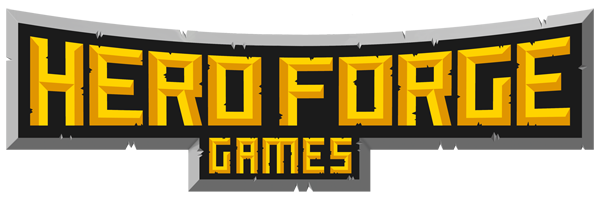For the last five weeks (or so) we’ve been playing the D&D Next playtest (as have much of the rest of the D&D fraternity). I’ve already posted my early thoughts on what they’re doing with the system, but these weeks as a player have given me plenty of thinking time.
My thinking has been prompted by D&D Next, and has focused on a few of the key areas of that game and whether there are any lessons here for Heroes Against Darkness:
• Bounded accuracy vs. +1 per level
• HP escalation
• Monster XP values
• Defenses vs. saving throws
Bounded Accuracy
One of my first posts here on the Heroes Against Darkness blog tracked the entrenchment of and changes to the +1 per level progression through each of the editions of D&D. As that post examines, +1 per level has been a key feature of D&D for about 30 years. Over time the mechanics of the progression have changed; starting with Character To Hit and THAC0 tables, then becoming Base Attack Bonus (BAB) progression, and finally its most elegant and internally consistent design: 4th Edition’s combination of ability score increases, magic weapons, and the 1/2 level bonus. Notwithstanding the fact that 4th Edition’s actual implementation of +1 per level was slightly flawed (because it got out of whack at higher levels), I used a simplified version of this for the +1 per level progression in Heroes Against Darkness.
My mistake was that I assumed +1 per level was forever.
I was wrong…
The recent playtest for D&D Next covers 1st to 3rd levels, and during that progression the pre-generated characters see no increase in their attack bonuses or the underlying ability scores. The D&D Next design team call this ‘Bounded Accuracy’, and it basically zeroes out all of the increasing progression (for attacks, saves/defenses) and replaces it with only one moving part, hit points. So in the old days, your 8th level fighter was better than a 1st level fighter because he has (generally) +7 extra to his attacks, +7 to his AC, and 7 extra levels worth of hit points. In D&D Next (as it stands) the +1 per level progression is gone and the only advantage that the 8th level fighter has over the 1st level counterpart is the additional hit points.
If you’re in the mood for killing your babies, I think that the zeroing out of redundant moving parts is a fantastic idea.
+1 per level is mostly redundant because it increases for both the attacks and Defenses (at least in 4th Edition), so when you’re fighting monsters of your equivalent level then it is effectively static (because your attack bonus will be cancelled out by the monster’s increased defenses/saving throws). I say it’s mostly redundant, because when you’re fighting monsters of higher or lower levels, the disparity between your attack bonus and the monster’s higher or lower defenses/saving throws is a factor and it effectively simulates the relative capabilities of the combatants.
But. Hit points already does this.
The higher level monster already has more HP and the lower level monster already has less HP. So the change to bounded accuracy means that your attacks and defenses are relatively (or entirely) static and you have the same chance of hitting a higher level monster as you do a lower level monster. In fact, the whole idea of monster levels may have also been zeroed out, with the monster’s HP becoming its only variable.
But.
As these rules are presented so far in the D&D Next playtest, there is no progression at all (at least none in the first three levels). There’s a possibility of them allowing +1 to one or more ability scores at 4th Level, but that only translates into an actual increase to a modifier every 8th level! I’m not sure that I want to play a game where my character’s only development and progression over time is his (or her) hit points.
HP Escalation
The introduction of bounded accuracy (why can’t we just call it +0 per level!) has put more emphasis on the amount of HP that characters have at the start of the game, and the amount that they gain each time they reach a new level. One of the areas of Heroes Against Darkness that I’m thinking about closely is the HP escalation at higher levels. Basically, the removal or reduction of +1 per level means that you have the opportunity to scale back the HP increases that characters see over the course of the supported level scale, meaning that ‘high’ level characters end up with 60 (or so) HP instead of 120 HP.
Monster XP Values
It does make we wonder, if they went to all the trouble of zeroing out other areas by introducing bounded accuracy, why haven’t they also zeroed out the monster XP values (which are all multiples of 25).
Defenses and Saving Throws
The reintroduction of saving throws to D&D Next is another area I’m conflicted about. Actually, that’s not entirely true. I’m not conflicted, I think that it’s a truly retrograde step.
D&D 4th Edition replaced the earlier saving throw sets (either five or three) with a set of four Defenses, which included armor class. The advantages of this were:
• It moved all dice rolls to the attacker
• It clarified which defense an attack was against
• The Defenses could have bonuses added separately
When D&D Next was first announced, the designers talked about doing away with Defenses by having attacks made against ability scores, which struck me as a fantastic idea because it removed the additional layer of abstraction and removed some numbers. However, in the playtest documents it’s clear that they weren’t able to execute this idea, probably because of the relationship between ability scores and ability modifiers (there’s a blog post in that chestnut). I think that they would not have been able to reconcile the fact that ability scores increase by 2 for every 1 point that modifiers increase, leading to the ‘Defenses’ (the ability scores) outrunning the attack bonuses (the ability modifiers).
Instead, we’ve ended up with a fairly complicated hodge-podge of numbers and modifiers for the saving throws (makes you wonder why they didn’t just go back to Defenses, but I imagine that the grognards wouldn’t have a bar of those).
Here’s what we have now:
• The spellcaster has a Save DC (say around 14).
• The spellcaster also has a Spell Attack bonus (around +4).
• Some spells are cast against the target’s AC, in which case the spellcaster rolls and uses their Spell Attack bonus to beat the target’s AC.
• Other spells are cast allow an saving throw and specify an ability, so the target rolls and adds their relevant ability modifier to try to beat the spellcaster’s Save DC.
• To further complicate the issue, there are other spells that offer no defense and no save.
Frankly, it’s a mess. You’ve got numbers flying back and forth across the table. You’ve got three different resolution mechanics for different spells. And all because they wanted saving throws back.
That’s the price of progress (sarcasm).
Of course, there is a way of using ability scores as Defenses, but it requires the designers to kill one of D&D’s most sacred cows. And that is another blog post for another time…
Head over to the game rules download page and see why defenses are better than saving throws: Heroes Against Darkness – Game Rules.

